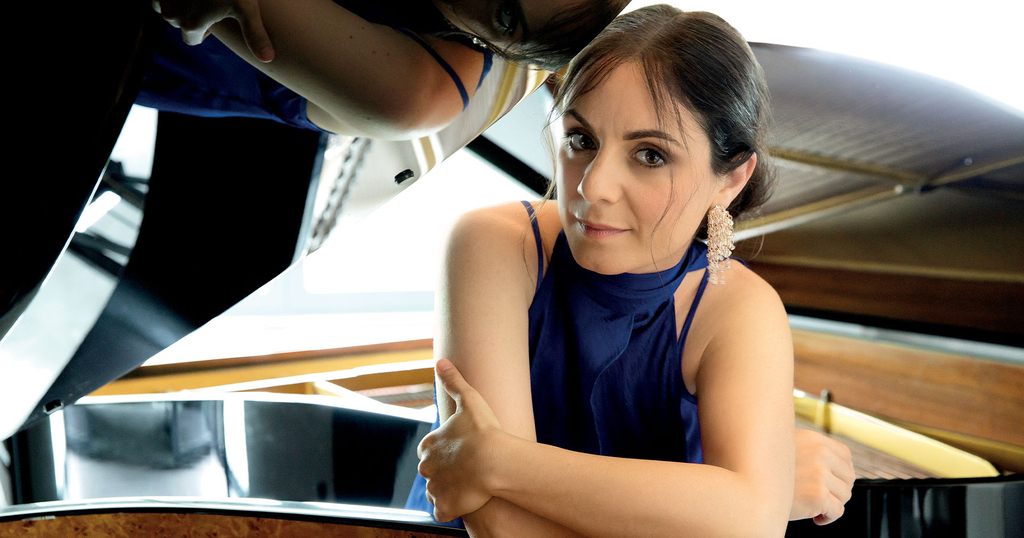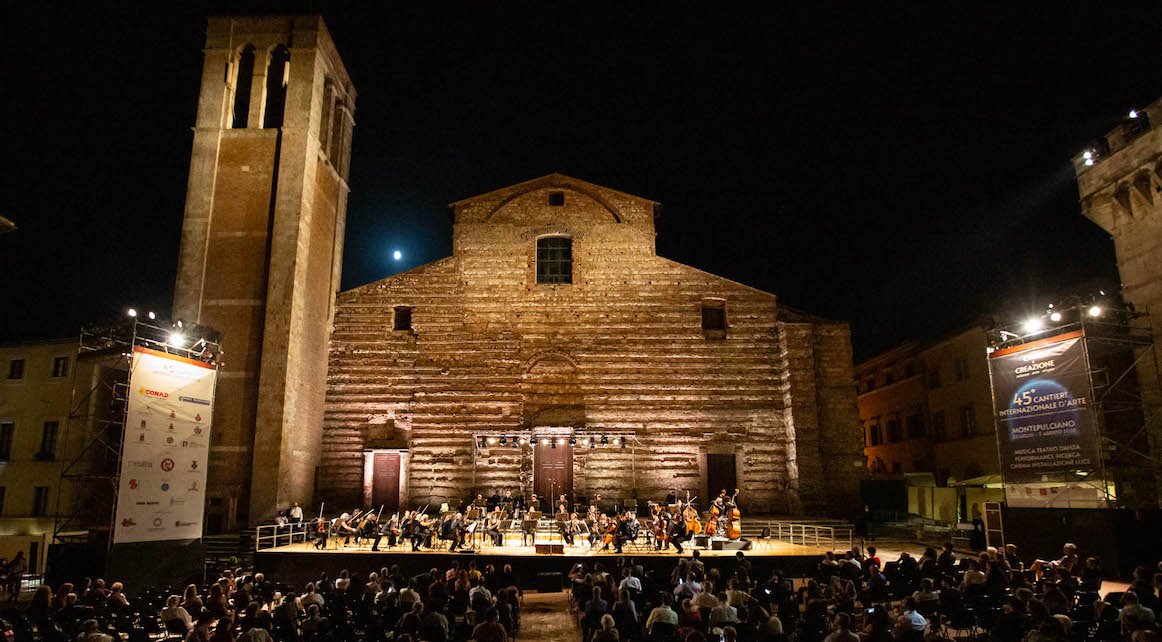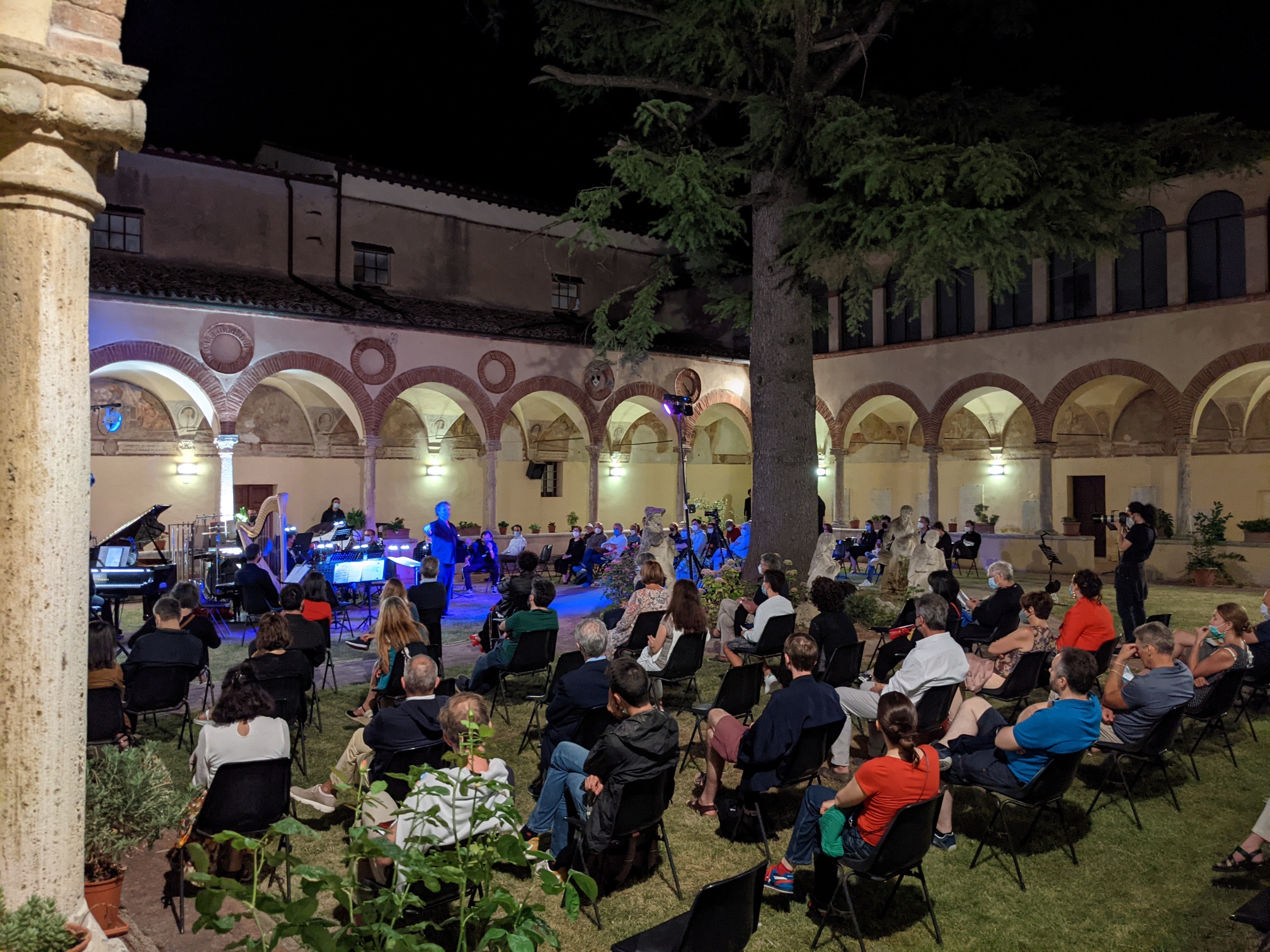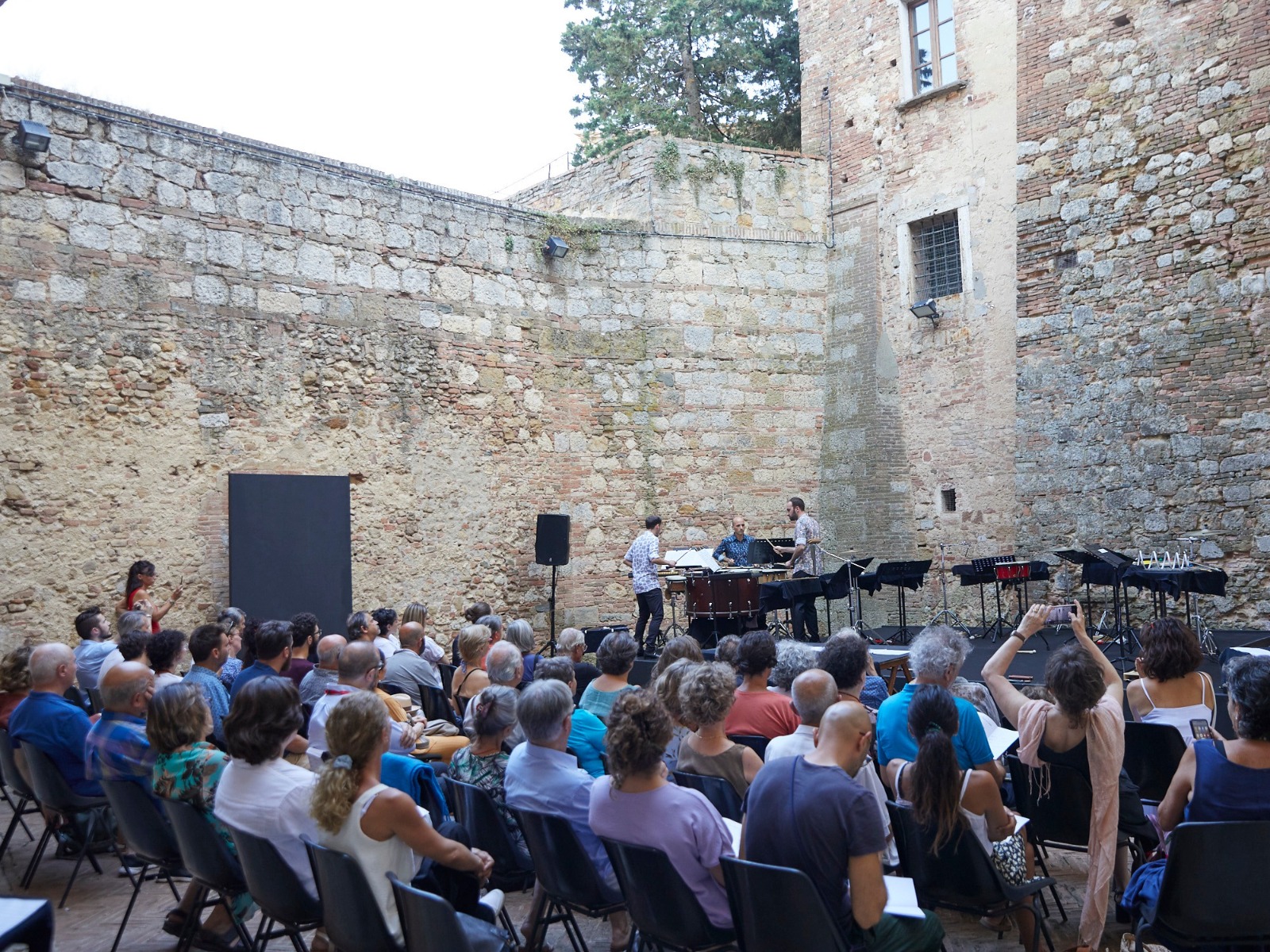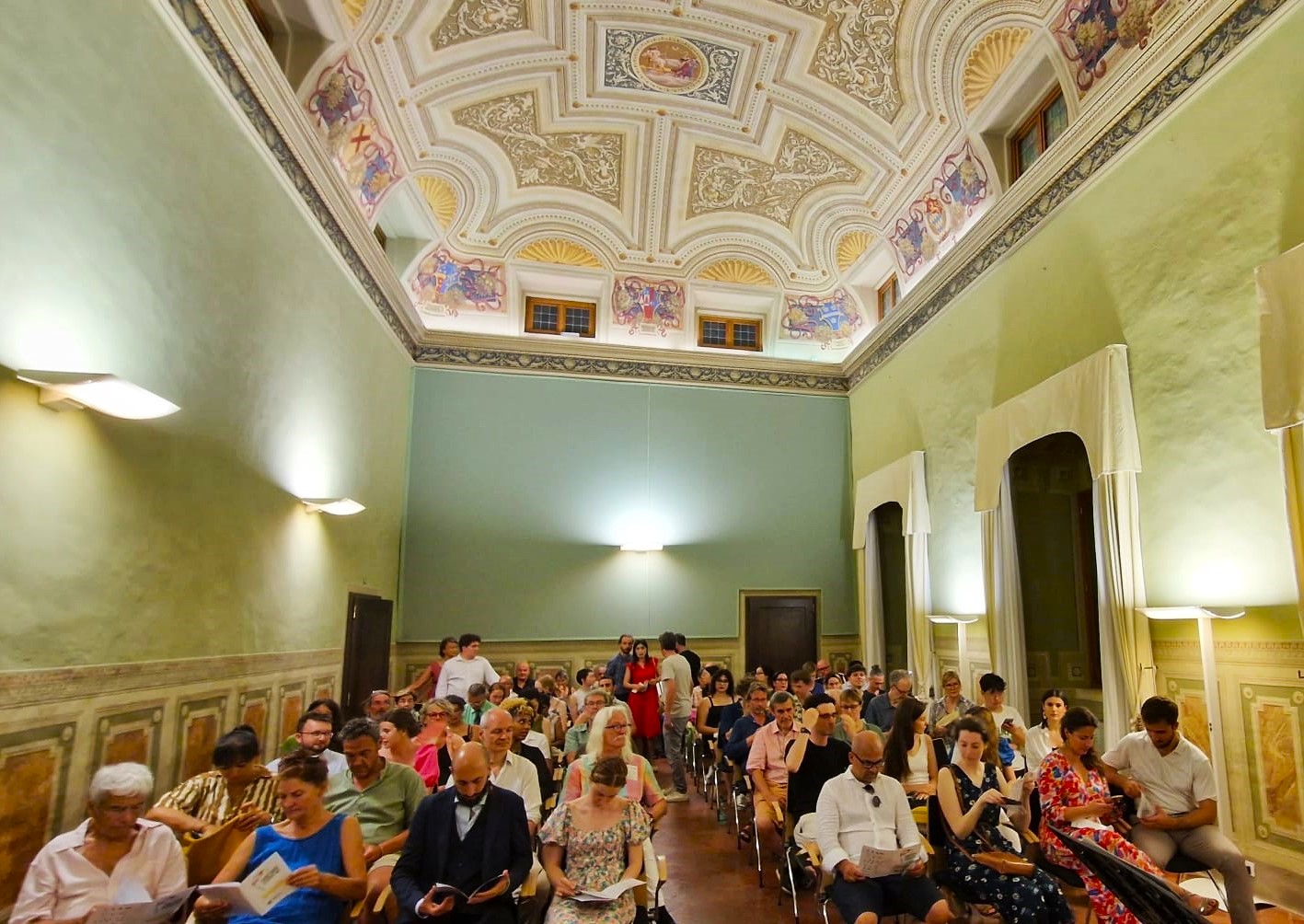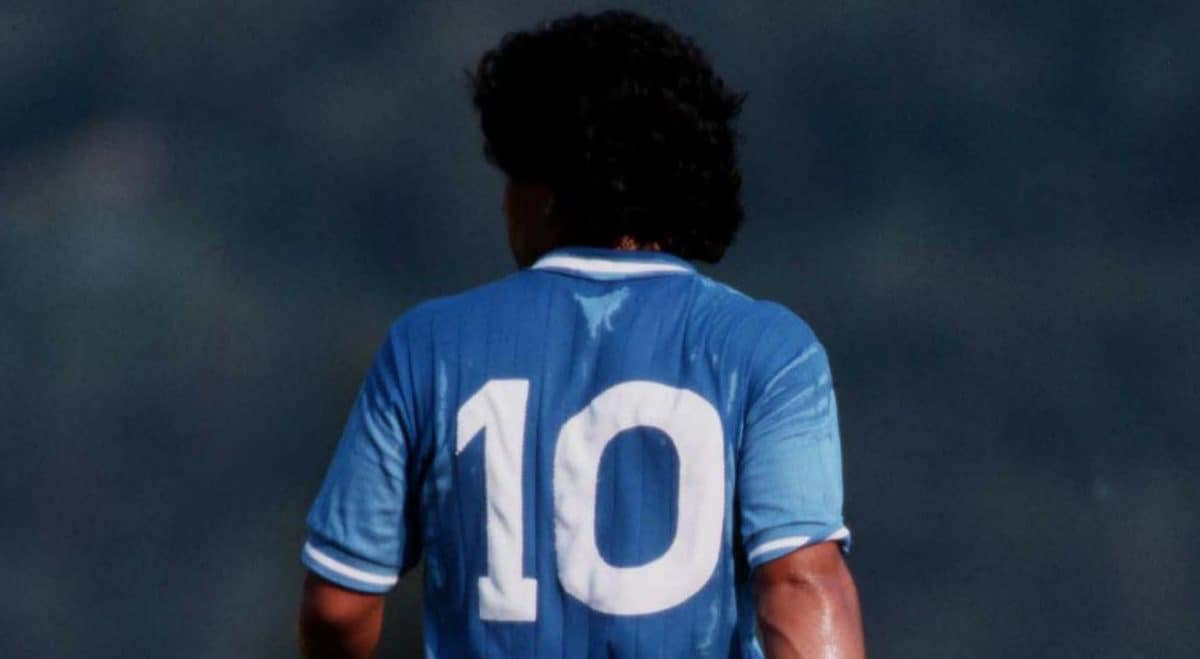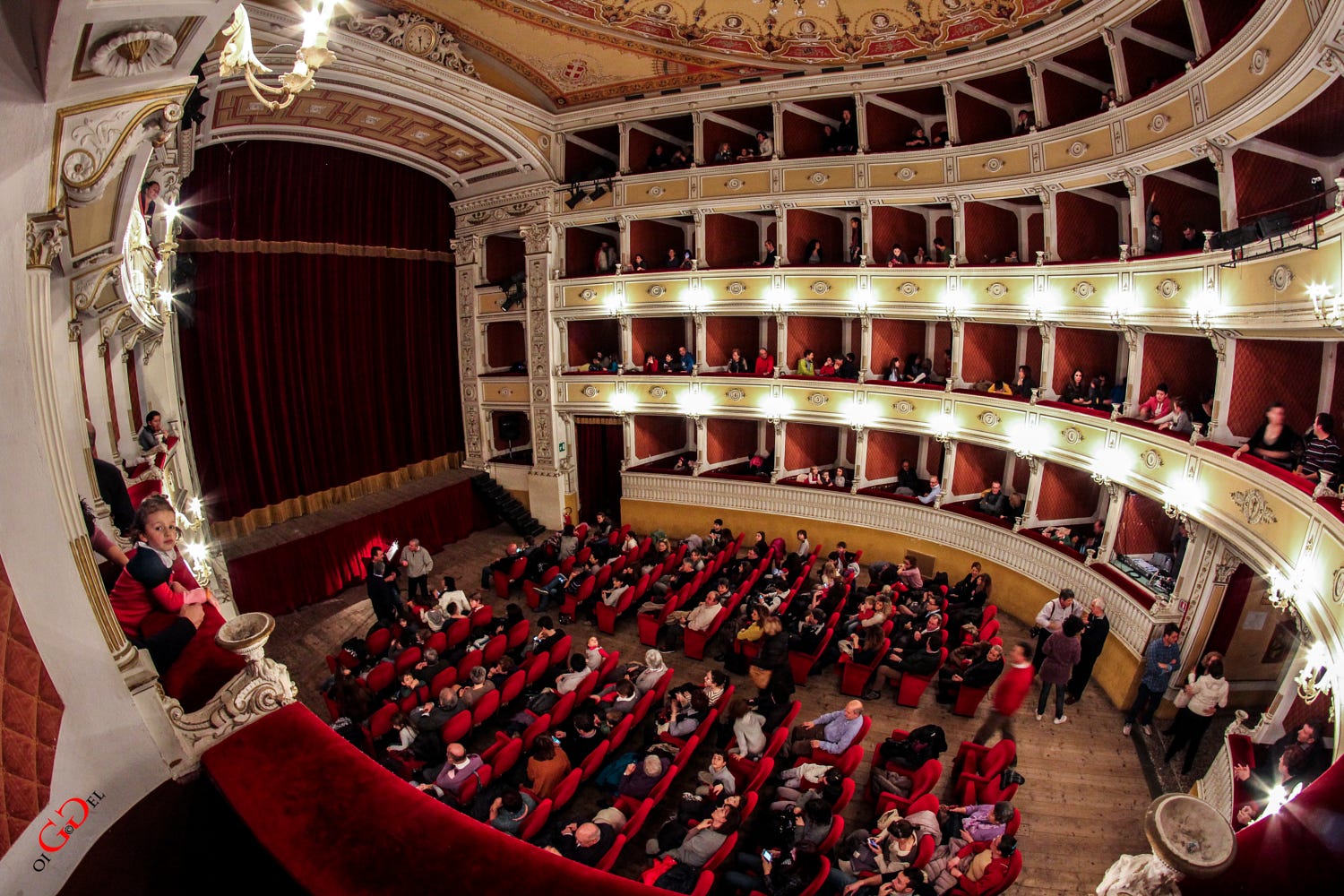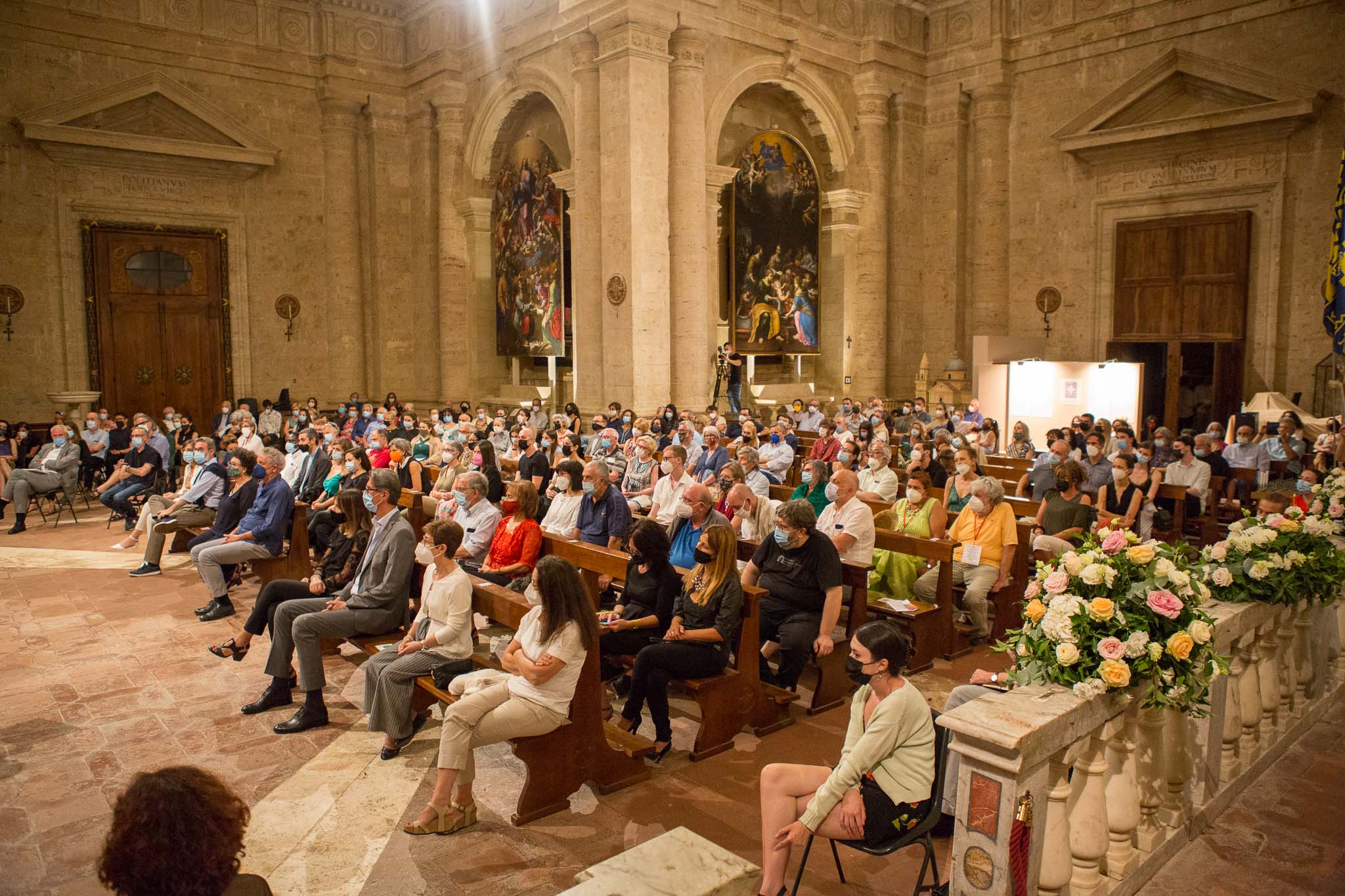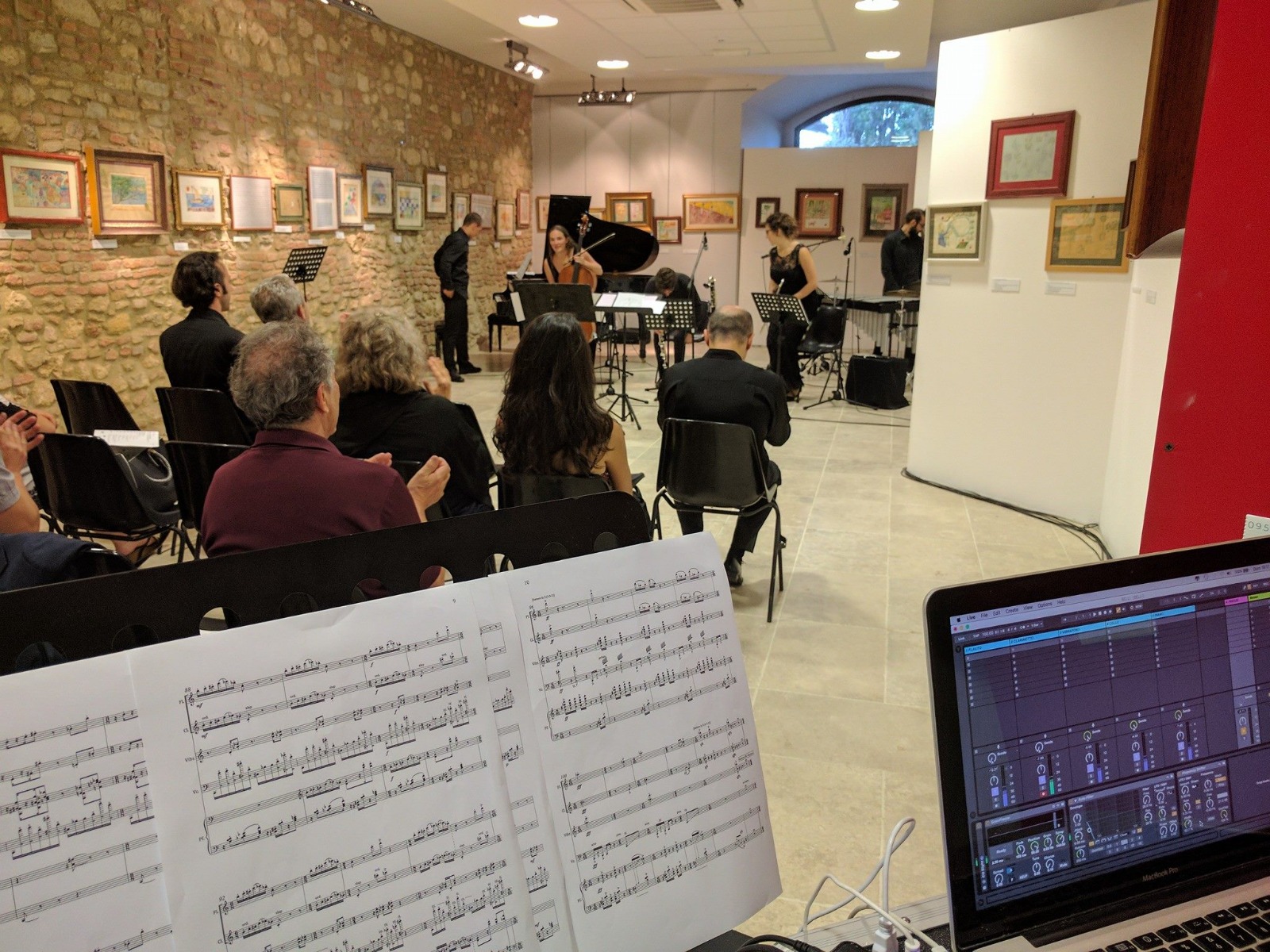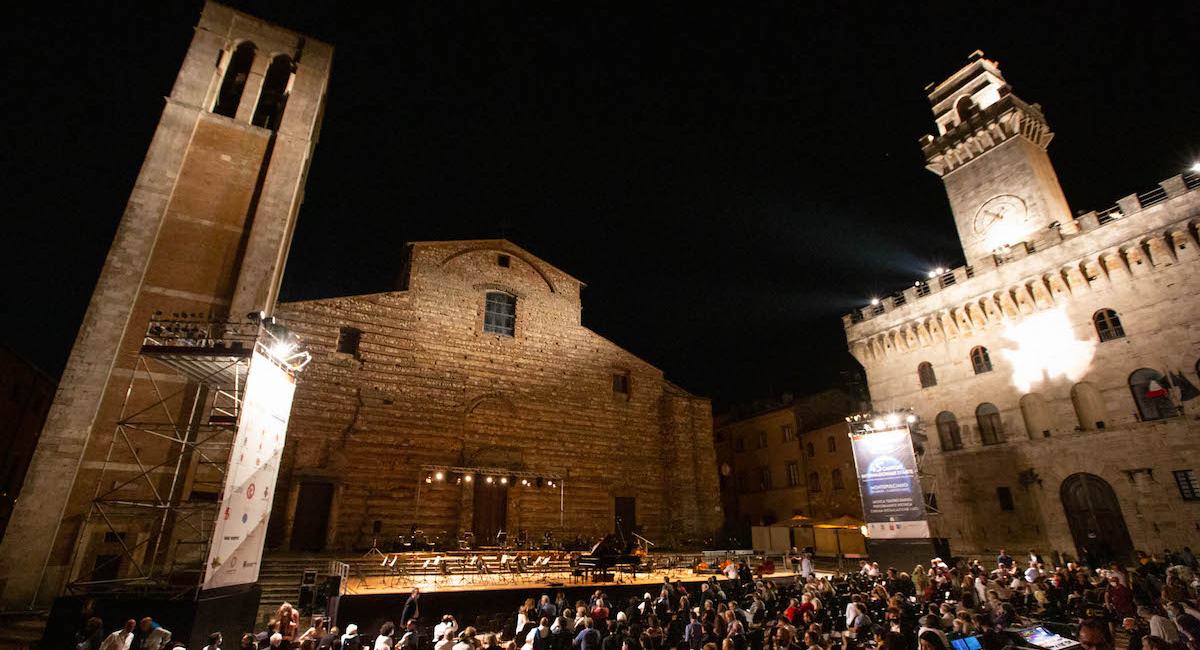SERIE CHOPIN The Young Fryderyk III
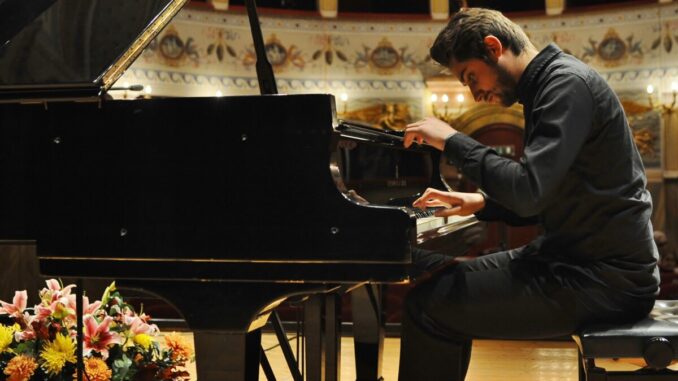
David Mancini
pianoforte
MONTEPULCIANO - Chiesa di San Bernardo
VENERDÌ 26 LUGLIO
Ore 18
INGRESSO € 5
ACQUISTA IL BIGLIETTO
Per tutti i biglietti acquistati in prevendita, la maggiorazione prevista è di 1,50 euro.
David Trio:
Gloria Santarelli violino
Chiara Mazzocchi viola
Tommaso Castellano violoncello
Emanuele De Luca violino
Fryderyk Chopin
(1810 - 1849)
Concerto in mi minore per pianoforte e orchestra op. 11
Allegro maestoso
Romanza: Larghetto
Rondò: Vivace
Il concerto sarà preceduto da
ANTEPRIMA YOUNG
Leonardo D'Azzena tromba
(segnalato al Concorso Arezzo 50&Più)
Massimiliano Scatena pianoforte
Francis Poulenc
(1899 - 1963)
Les chemins de l'amour
Edvard Grieg
(1843 - 1907)
Albumblatt
da Pezzi lirici op. 47
Leonard Bernstein
(1918 - 1990)
Rondò for Lifey
Alexander Glazunov
(1865 - 1936)
Albumblatt
Tuomas Turriago
(1979)
Fresas con Crema
Tequila eTacos
da Salon Latino - Three Spicy Pieces
in collaborazione con
Fondazione Accademia di Musica di Pinerolo
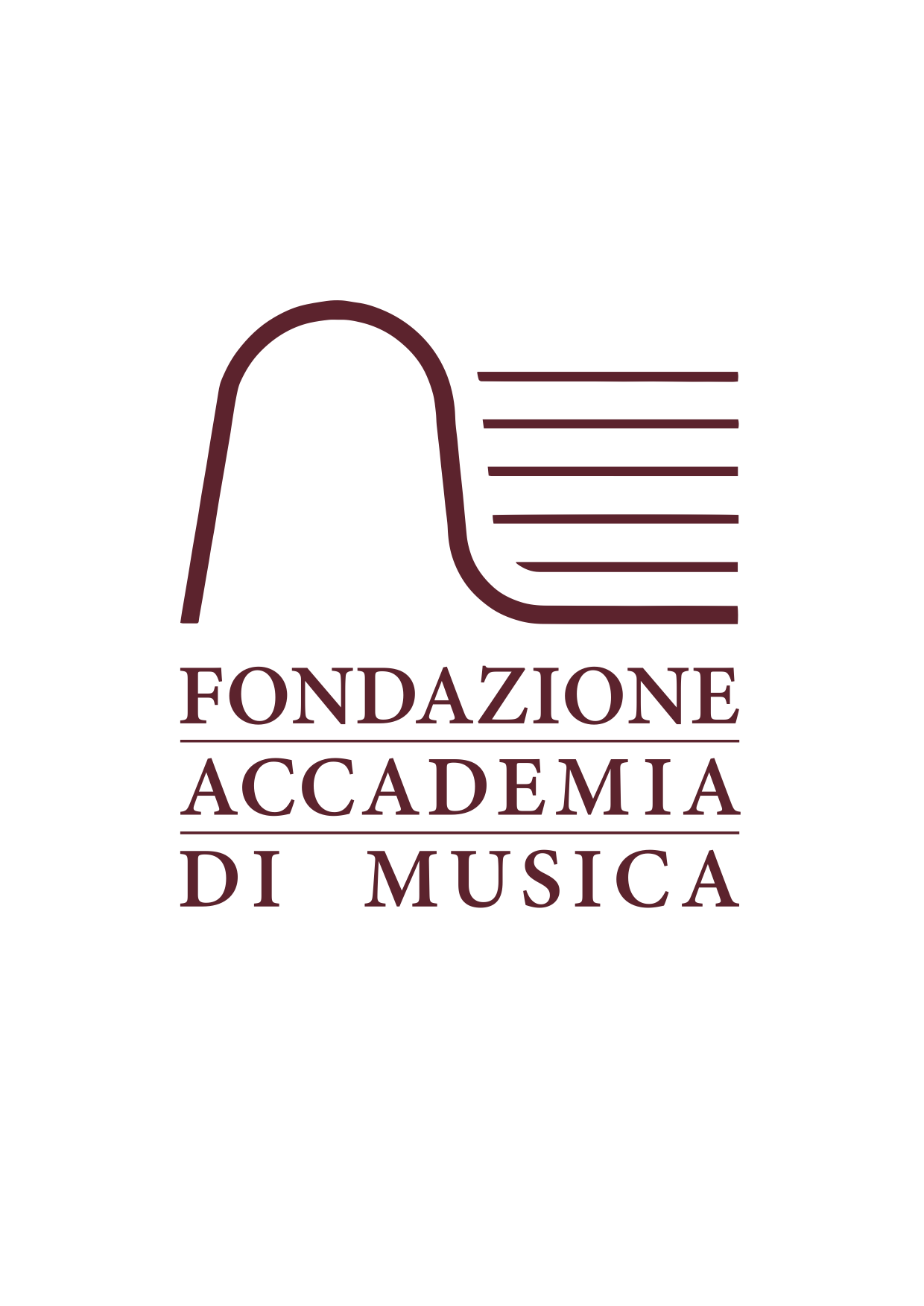
Concerto in mi minore per pianoforte e orchestra op. 11
Il concerto in mi minore per pianoforte e orchestra op. 11 è il secondo concerto per strumento solista di Fryderyk Chopin. Composto a pochi mesi distanza dal concerto in fa minore, venne eseguito per la prima volta a Varsavia l’11 ottobre 1830, in quella che sarà l’ultima esecuzione pubblica di Chopin prima di lasciare la Polonia. Venne ben accolto dal pubblico fin da subito, mentre la reazione della critica fu alquanto fredda. I motivi di tale giudizio riguardarono l’orchestrazione, ritenuta troppo povera a favore di un eccessivo solismo del pianoforte. La stroncatura più celebre arrivò dal compositore Franz Liszt, che negli anni avvenire sarà invece un grande difensore della musica del compositore polacco.
Come il primo concerto in fa minore, anche questo è costituito da tre movimenti e anche qui, nonostante la giovane età del compositore, è già possibile rintracciare alcuni dei tratti che diventeranno caratteristici del suo stile. Nel secondo movimento, la Romanza - Larghetto, emergono temi dal carattere romantico e malinconico che suonano quasi come una premonizione: infatti Chopin di lì a poco lascerà la Polonia e non farà più ritorno nella sua terra natale. Nel terzo movimento, il Rondò, sentiamo le note e il ritmo di una Krakoviac, antica danza tradizionale polacca. Anche in questo caso Chopin inserisce in una sua composizione un elemento di stampo folkloristico.
A conclusione del concerto segue una Coda destinata al pianoforte, in cui emerge già la grande maestria di Chopin nella scrittura pianistica, che troverà il suo apice nelle sue future composizioni.
In questa occasione il pianoforte di David Mancini sarà accompagnato dal David Trio e Emanuele De Luca al violino, ai quali sarà affidata l’esecuzione di una trascrizione dell’originaria parte orchestrale. (Myriam Bizzarri)
Concerto in E minor for piano and orchestra op. 11
The Concerto in E minor for piano and orchestra op. 11 is Fryderyk Chopin's second concerto for solo instrument. Composed a few months after the concert in F minor, it was performed for the first time in Warsaw on 11 October 1830, in what would be Chopin's last public performance before leaving Poland. It was well received by the public right away, while the critical reaction was rather cold. The reasons for this judgment concerned the orchestration, deemed too poor in favor of excessive piano soloism. The most famous criticism came from the composer Franz Liszt, who in the years to come would instead be a great defender of the Polish composer's music.
Like the first concert in F minor, this one also consists of three movements and here too, despite the composer's young age, it is already possible to trace some of the traits that would become characteristic of his style. In the second movement, the Romanza - Larghetto, themes of a romantic and melancholy nature emerge which almost sound like a premonition: in fact Chopin will soon leave Poland and will never return to his homeland. In the third movement, the Rondo, we hear the notes and rhythm of a Krakoviac, an ancient traditional Polish dance. Also in this case Chopin inserts a folkloristic element into one of his compositions.
At the end of the concert, a Coda for the piano follows, in which Chopin's great mastery in piano writing already emerges, which will find its peak in his future compositions.
On this occasion David Mancini's piano will be accompanied by the David Trio and Emanuele De Luca on the violin, who will be entrusted with the performance of a transcription of the original orchestral part. (Myriam Bizzarri)
 Sostieni i progetti
Sostieni i progetti Amministrazione Trasparente
Amministrazione Trasparente Contatti
Contatti
